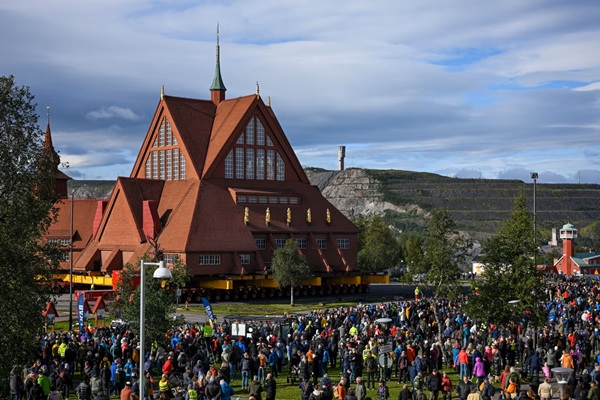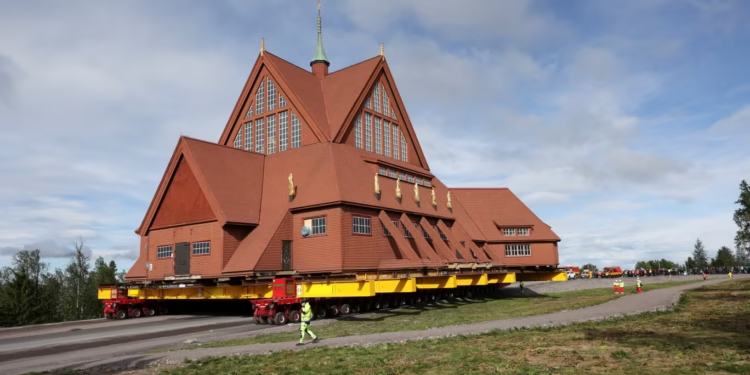A famous Swedish church has begun its move to a new home, inching five kilometres down an Arctic Road to make way for the expansion of the world’s largest underground iron ore mine while being live streamed on Tele.
Earlier this week, workers jacked up the 600-tonne, 113-year-old Kiruna Church from its foundations and hefted it onto a specially built trailer.
Broadcaster SVT set up dozens of cameras along the route to enable people across Sweden and the world watch what is billed as “Den stora kyrkflytten” (“The big church move”). A record number of Swedish viewers tuned in to watch the wooden church was relocated – in one piece – five kilometres from where it has stood for 113 years.
The future of the hulking Kiruna church, 145km north of the Arctic Circle, was at risk due to subsidence caused by nearby iron ore mining.

Instead of waiting for disaster to strike, city authorities hoisted the church on to a low trailer and began the slow move to a new safer location after a blessing and godspeed from the local pastor Lena Tjärnberg.
Speed is not the issue here: the movers are aiming for 500m per hour, but the church managed just 30m in its first hour, the wheels grinding slowly under the 672-tonne weight.”
Watching everything closely was project manager Stefan Holmblad Johansson, who said the greatest challenge was widening the roads ahead of the move.
Swedish law forbids mining under buildings so dozens of buildings in Kiruna – and thousands of people – have already been moved as part of a 30-year project.
A new town centre was inaugurated in 2022 as part of the €900 million relocation plan, financed by LKAB, a state-owned mining company, and expected to continue for another two decades.
A large crowd lined the route streets amid fair weather as the structure began to move, including a large number of tourists.
Lena Edkvist, visiting from Gothenburg, said the move interested her more for cultural than religious reasons. “It feels like an honour that they’re moving it intact instead of dismantling it piece by piece,” she said.
The church, designed by Gustaf Wickman, is one of Sweden’s most-loved older buildings. It is known for its architecture that resembles a lávvu (a Sámi hut).
On Wednesday, a church service and coffee event will be held in an attempt to break a world record for church coffee. There will also be musical entertainment, including a concert with the singer Carola.
The church is expected to reopen at its new location at the end of next year, but the city’s entire relocation is not expected to be completed until 2035.

